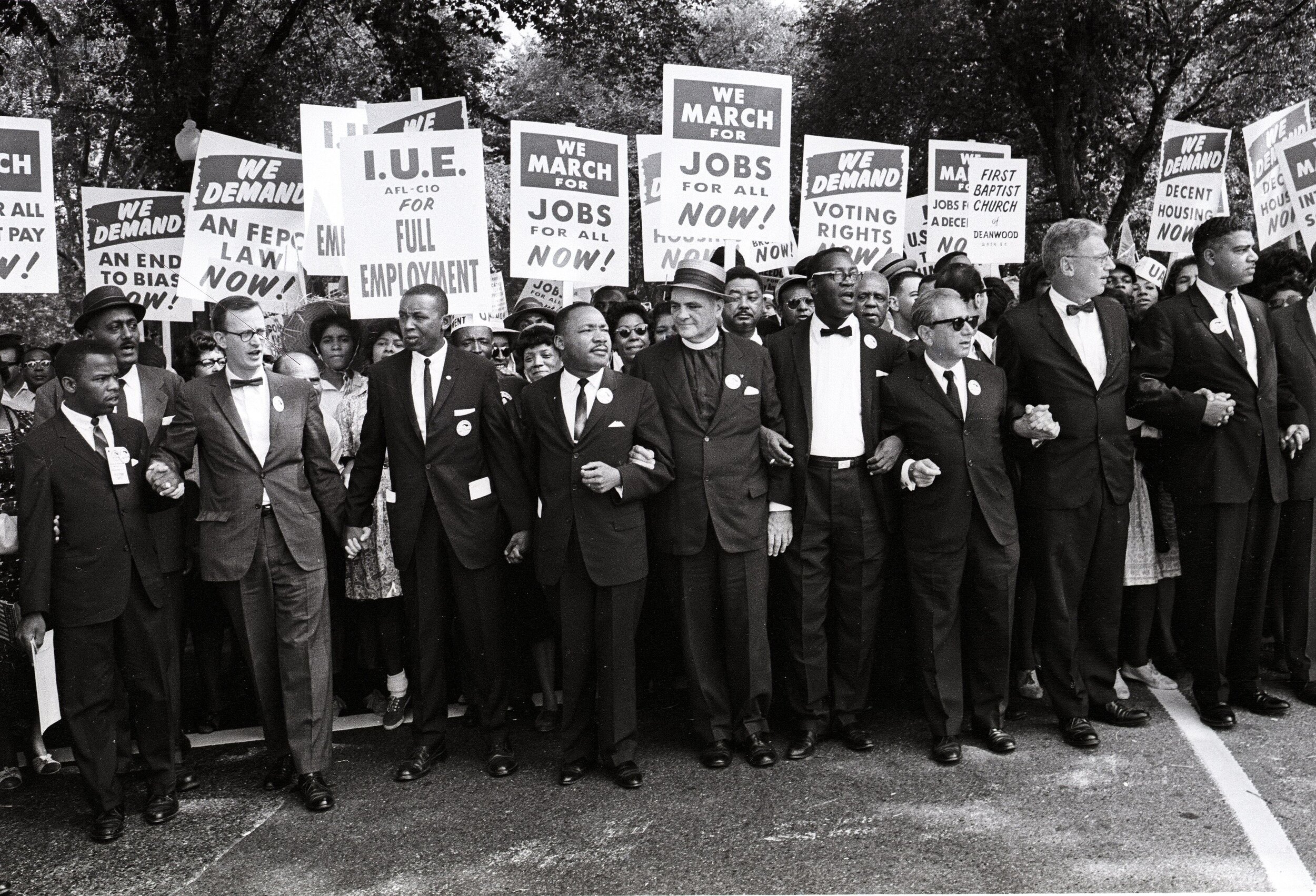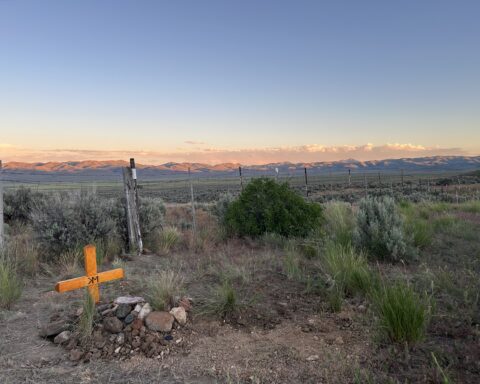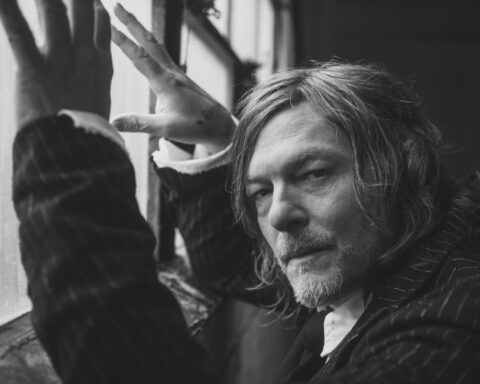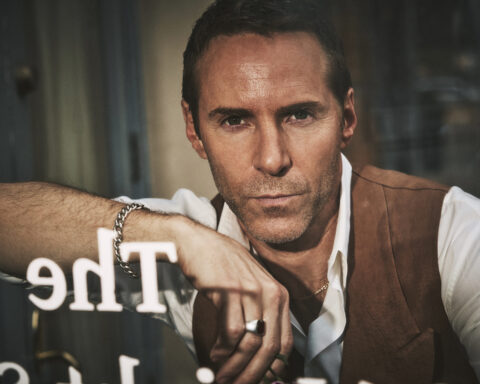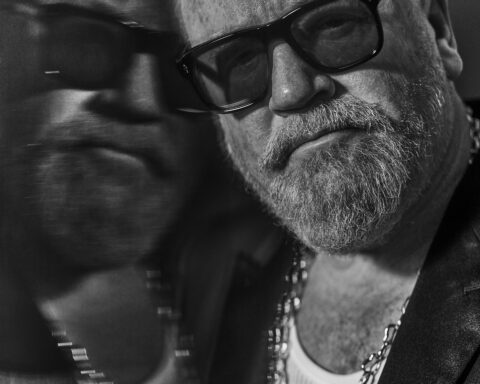The relationship between fashion and politics is as timeless as a good double-breasted suit.
How we choose to dress, and how we’re able to dress, has historically been an indicator of our beliefs and affiliations — whether consciously or subconsciously — for as long as we’ve been wearing clothes.
And from suffragettes wearing white to fight for women’s rights in the early 20th century, to the ‘Make America Great Again’ caps that became synonymous with Donald Trump’s campaign in the last election, our clothes have been used as an overt indicator of our stance on political and social issues.
Today, with the abundance and immediacy of the internet and social media, the platform to make a statement about what is inside us through what we wear on the outside is becoming even more readily available to us all.
So with the US election less than five weeks away, the fashion industry is uniting to make their voice heard — and seen — and to encourage others to do the same.

Jim Moore // 📸: Nathaniel Goldberg
In 40 years as creative director and then creative director at large of GQ, Jim Moore has had a front row seat at watching fashion and politics intertwine through the decades.
“Things start with fashion then they trickle down,” he says. “And it is the utmost concern of most people in fashion that people are given the right to be creative and themselves, and feel the freedom to do whatever they want.
“I can get all riled up just like the person next to me about who’s president, or who’s doing a good job or not doing a good job.
“But if there’s someone who’s going to block those basic rights that we have as human beings, then I’m going to want to push against that. And you’ll find that a lot of people in fashion are of that mindset.”
In recent months, Jim has become involved in a new movement of statement fashion by designing a t-shirt for Vote to Save Us — a line of tees that are the brainchild of executive producer Steve Bauerfeind to get out the vote — and has also set up an initiative called The Mentors, alongside NFL activist Colin Kaepernick’s stylist Rachel Johnson, to help young black talent in the menswear industry.
He says: “When Steve said he was doing Vote To Save Us, I said, ‘I’m behind that. What can I contribute?’ Steve is a hero of mine because he’s always putting his arm in the air for the right causes. And we have to get everyone to vote.
“I’ve done a couple of t-shirt collaborations and my favorite thing is always a black t-shirt with white lettering. So I did this 70s design, which is actually an old GQ logo typeface. And then we sent them out to movers and shakers and famous people.”

Steve Bauerfeind in Jim’s design
The proceeds from Vote To Save Us are going to a selection of charities, and the initiative is also working to register voters and on other awareness campaigns. As well as Jim’s tee, there are also offerings from three other designers around the world with different logos focusing on different civil and human rights.
And founder Steve says: “It could be vote to save whatever is important to you. So if it’s my gay rights and my marriage, then vote to save that, if it’s the environment, the planet, or if it’s to save your right to have an abortion, healthcare. I felt like it could appeal to a lot of different people.”
Among the many famous GQ shoots creative directed by Jim were two with President Barack Obama and the iconic cover with Kaepernick after he was the first player to ‘take a knee’ at a football game. And both impacted him hugely in very different ways.
“President Obama is my hero and I did an amazing couple of shoots with him,” he said. “And twice I saw that he was wearing a tie that I wasn’t so happy with.
“The first time it was the whole suit, and he said that he would change it. The second time we were at the White House and I said: ‘Mr President, do you remember me?’ And he said: ‘Yeah, I remember you, you didn’t like what I was wearing, and by the way you’re looking at my tie now I can tell you don’t like my tie today either.’
’So he said, “I’ll just go home and get you more options.’ And then — I’m such a Taurus and I put my foot in my mouth all the time — so I said, ‘How long will it take?’ And he said, ‘Jim, I live upstairs.’”

Colin Kaepernick’s GQ cover // 📸: Martin Schoeller
But while that shoot will live long in Jim’s memory, it was the cover with Kaepernick for the November 2017 issue of GQ that perhaps had an even bigger impact on Jim’s future direction.
“At that moment in time, it was a very polarizing subject,” Jim explains.
“We had to find this undisclosed location in Harlem and I wanted to do a picture with crowds, but instead of actually inviting the general public we got members of the charities that he was supporting.
“That was the first time I heard about Black Lives Matter. And then when the process started to happen, I started opening up to the fact that black people are not treated the same as white people in this world, and that’s just what it comes down to.”
While Jim is encouraged by the freedom young people now have to dress how they choose and express themselves, and calls it “an amazing point in history,” he is on a mission to encourage more young people to embrace suits, which brings us onto the iconic images of groups of stylish, suited men at civil rights rallies in the 1960s.
“That was actually one of the inspirations for wanting to crowd around Colin,” he says. “Martin Luther King or Malcolm X on a balcony talking, and their followers.”
And on their choice of attire, he says: “You can see the respect that they have for themselves and their fellow man to get that dressed up to go to a rally. Their shoes are shined, they’re wearing a beautiful suit and their hair is groomed — and that shows great manners and great respect. There’s nothing like a man in a suit.”

IMG Model and Fashion president Ivan Bart
President of IMG Model and Fashion Ivan Bart has been at the forefront of improving representation in fashion throughout an illustrious career that has taken him to the pinnacle of the industry.
As the leader of the powerhouse agency, he has signed transgender model Hari Nef, the late China Machado at the age of 82, and has launched the careers of numerous models of different ethnic minorities and sizes including Joan Smalls and Ashley Graham, alongside the likes of Kate Moss, Giselle Bundchen and Gigi and Bella Hadid.
When he began his career in the 1980s, Ivan realized quickly he had a role to play in making the industry reflect, and inspire, the world around it.
“It’s just been in my core, having grown up the way I did, having diversity in my family and being an openly gay man,” he says. “And you come into your career with the things that are inside of you.
“I understood I had to use all my skill set to manage people and really fight for their individuality and who they are. And it was very clear to me that there was a lot of work to be done in the industry.
“Then 20-odd years ago, we ended up representing Alek Wek, a beautiful woman from Sudan. She walked into the room and took our breath away. We worked really hard and then she ended up doing Vogue and lots of cosmetic campaigns and apparel campaigns and became very visible.
“And when Lupita Nyong’o won her Oscar and did the talk shows the next day, she was saying that she opened up Vogue when she was 10 years old, saw Alek Wek and realized that she could dream bigger for herself.
“It says on my Instagram, ‘Through fashion imagery, we can affect social change.’ I think the key thing is, in order to feel good about yourself, you need to see yourself.
“So I became very vigilant about fighting the industry on representation, and really pushing on all representation and that being race, age, size, gender.
“And I think part of the push on representation also needs to be the push of who are the influencers that are sitting in the seats? Who are the CMOs or the editors? So I’m really committed now to helping the industry also find and place the creatives and the influencers who make the decisions.
“It’s important to have diversity in who are making the final decisions, just as much as we have to have the talent that represents being diverse.”

Alek Wek 📸: Mike Coppola / Getty Images
While making the fashion represent us all through diversity and inclusion is part of the battle, another is the message the icons of the industry are conveying with what they wear and say.
With America going to the polls on November 3, another of the initiatives in the industry is Fashion Our Future 2020, launched by fashion executives Abrima Erwiah and Rosario Dawson, with Ivan among its key supporters.
He hopes to encourage the young models on his books — and those who follow them — to engage in the election and make their voice heard.
Among the offerings are t-shirts, face masks and lunch boxes — all good accessories for standing in line at the polling place — that read “Text to Register” and “Model Voter,” alongside initiatives to encourage brands to promote issues that matter and encourage participation.
“We are in a moment of reckoning,” says Ivan. “And if you don’t know that, open your window. Look out on the street. There’s been such complicity and complacency for so long that people are in the streets screaming.
“So we need to be awake. It’s really a moment of urgency, and the time is now. And we have a generation now, I guess with the immediacy of social media or communications, that have no patience. There’s no, ‘Oh, we’ll work on that, we’re getting there, look how far we’ve come.’ No. Those kind of statements really are abrasive to a young generation who wants change and wants it now.”
And he now hopes his industry can do its bit to encourage young people in particular to get their voice heard by voting.
“I think our greatest impact is on young voters,” he says. “We have a generation who maybe feels that their vote doesn’t count. And this is the power, that we have a lot of young talent.
“But I don’t care who you vote for. Whatever the outcome is, you should be part of the process, and whatever your choice is, you should be part of the process. And whoever wins or loses, it should be by a large majority of people who are engaged in the process.
“I’d like to get people excited to really use their voice. This generation has no problem getting out in the streets and screaming, and they need to take that power to the polls as well.
“I want to reach out to young people who don’t know, who don’t feel engaged, don’t know the process, or feel like their voice doesn’t matter. Because it does.”


